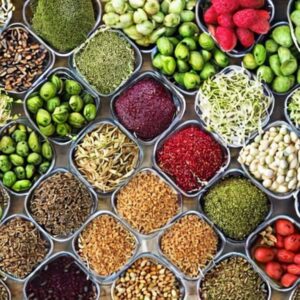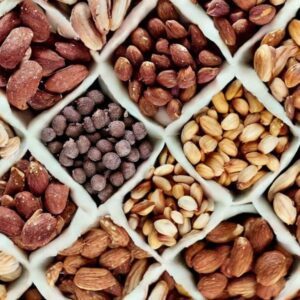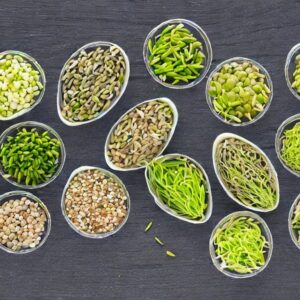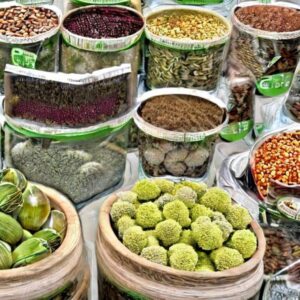When it comes to weight loss, many people focus on restricting calories or increasing exercise, but often overlook the importance of a nutrient-dense diet. One type of food that has been gaining attention in the weight loss world is sprouted foods. Sprouted grains, beans, lentils, nuts, and seeds are packed with essential nutrients, fiber, and protein, making them an excellent addition to any weight loss diet. In this article, we will explore the benefits of sprouted foods in weight loss, including their impact on digestion, metabolism, and energy levels. Additionally, we will highlight some of the best sprouted foods for weight loss and provide tips on how to incorporate them into your daily routine.
What are sprouted foods?
Sprouted foods are foods that have been allowed to germinate, or sprout, before being consumed. This process typically involves soaking seeds, grains, or legumes in water for a period of time, until they begin to sprout or grow small shoots. Some examples of sprouted foods include:

Sprouted grains: These are grains that have been allowed to sprout before being used in breads, crackers, and other baked goods.
Some examples of sprouted grains include:
Wheat: Wheat berries can be sprouted and then used in breads, crackers, and other baked goods.
Barley: Barley can be sprouted and then added to soups, salads, or used as a side dish.
Oats: Oats can be sprouted and then added to granolas, muesli, or used in baking recipes.
Quinoa: Quinoa can be sprouted and then used in salads, as a side dish, or in grain bowls.
Rye: Rye berries can be sprouted and then used in breads, crackers, and other baked goods.
Spelt: Spelt can be sprouted and then used in baking recipes, soups, and stews.
Kamut: Kamut can be sprouted and then used in baking recipes, soups, and stews.
Brown rice: Brown rice can be sprouted and then used in salads, soups, and as a side dish.
These are just a few examples, but many different types of grains can be sprouted. Sprouted grains can be consumed raw or cooked, they can be added to smoothies, salads, soups, bread, and more. Sprouted grains have a nuttier, sweeter taste than non-sprouted grains and they are also more nutritious.
Sprouted legumes: Legumes such as lentils, mung beans, and chickpeas can be sprouted and eaten raw or cooked.
Some examples of sprouted legumes include:
Lentils: Lentils can be sprouted and then added to salads, sandwiches, or used as a garnish.
Mung beans: Mung beans can be sprouted and then used in stir-fries, soups, or as a topping for rice bowls.
Chickpeas: Chickpeas can be sprouted and then used in hummus, falafel, or as a topping for salads.
Peas: Peas can be sprouted and then used in salads, sandwiches, or as a garnish.
Adzuki beans: Adzuki beans can be sprouted and then used in soups, stews, or as a side dish.
Black beans: Black beans can be sprouted and then used in soups, chili, or as a filling for burritos or tacos.
Fava beans: Fava beans can be sprouted and then used in salads, sandwiches, or as a garnish.
Soybeans: Soybeans can be sprouted and then used in stir-fries, soups, or as a topping for rice bowls.
Sprouted legumes are more easily digested than non-sprouted legumes, they are also higher in enzymes, vitamins, and minerals. They can be eaten raw, cooked, or roasted and added to salads, sandwiches, soups, and more. Some people may find that sprouted legumes cause less gas and bloating than non-sprouted legumes.
Sprouted nuts: Some nuts, such as almonds, can be sprouted and eaten as a snack or used in recipes.

Some examples of sprouted nuts include:
Almonds: Almonds can be sprouted and then eaten as a snack or used in recipes.
Walnuts: Walnuts can be sprouted and then used in baking recipes, salads, and as a garnish.
Pecans: Pecans can be sprouted and then used in baking recipes, salads, and as a garnish.
Hazelnuts: Hazelnuts can be sprouted and then used in baking recipes, salads, and as a garnish.
Cashews: Cashews can be sprouted and then used in spreads, dips, or as a topping for salads.
Pistachios: Pistachios can be sprouted and then used as a snack or in baking recipes.
Macadamia nuts: Macadamia nuts can be sprouted and then used as a snack or in baking recipes.
Brazil nuts: Brazil nuts can be sprouted and then used as a snack or in baking recipes.
Sprouted nuts are more easily digested than non-sprouted nuts, they are also higher in enzymes, vitamins, and minerals. They can be eaten raw, roasted, or added to salads, sandwiches, and more. Some people may find that sprouted nuts cause less gas and bloating than non-sprouted nuts.
Sprouted seeds: Seeds such as sunflower, pumpkin, and flax can be sprouted and added to salads, sandwiches, or used as a garnish.

Some examples of sprouted seeds include:
Sunflower seeds: Sunflower seeds can be sprouted and then used in salads, sandwiches, or as a garnish.
Pumpkin seeds: Pumpkin seeds can be sprouted and then used in baking recipes, salads, and as a garnish.
Flax seeds: Flax seeds can be sprouted and then used in smoothies, oatmeal, or as a topping for salads.
Sesame seeds: Sesame seeds can be sprouted and then used in baking recipes, salads, and as a garnish.
Chia seeds: Chia seeds can be sprouted and then used in smoothies, oatmeal, or as a topping for salads.
Hemp seeds: Hemp seeds can be sprouted and then used in smoothies, oatmeal, or as a topping for salads.
Millet: Millet can be sprouted and then used in baking recipes, salads, and as a garnish.
Amaranth: Amaranth can be sprouted and then used in baking recipes, salads, and as a garnish.
Sprouted seeds are more easily digested than non-sprouted seeds, they are also higher in enzymes, vitamins, and minerals. They can be eaten raw, roasted, or added to salads, sandwiches, smoothies and more. Some people may find that sprouted seeds cause less gas and bloating than non-sprouted seeds.
Proponents of sprouted foods claim that they have a number of health benefits compared to non-sprouted foods. Sprouted foods are higher in enzymes, vitamins, and minerals. They are also easier to digest, and may be less likely to cause digestive issues in some people.
However, it’s worth noting that sprouted foods also come with risks, particularly if they are not sprouted or stored properly. They can contain harmful bacteria and could cause food poisoning if consumed. It’s always important to use proper sanitation when sprouting and storing sprouted foods.
Use of sprouted food in weight loss:
Some people believe that sprouted foods can aid in weight loss, but there is limited scientific evidence to support this claim.
Sprouted foods are generally considered to be more nutrient-dense than non-sprouted foods, they are higher in vitamins, minerals, and enzymes. They are also easier to digest, which can make you feel full faster, leading to eating less and potentially helping weight loss.
Additionally, some studies have suggested that consuming sprouted foods may lead to improved blood sugar regulation and insulin sensitivity. This can make it easier to control appetite and cravings, which can aid in weight loss.
However, it’s important to note that weight loss is a complex process that depends on many factors, including diet, exercise, and overall lifestyle. Eating sprouted foods alone is unlikely to cause significant weight loss.
It’s always important to maintain a well-balanced diet, to eat in moderation and to exercise regularly in order to achieve and maintain a healthy weight. If you’re looking to lose weight, it’s best to consult a healthcare professional or a registered dietitian for personalized advice and guidance.
5 recipes with sprouted food
Sprouted Quinoa Salad:
Rinse and drain sprouted quinoa, add it to a pot with water or broth and bring to a boil.
Reduce heat, cover and simmer until quinoa is tender and all the water is absorbed.
Add diced cucumber, tomatoes, red onion, and chopped fresh herbs like parsley or cilantro.
For the dressing, mix olive oil, lemon juice, and a pinch of salt and pepper.
Toss the quinoa salad with the dressing and let it sit in the fridge for at least 30 minutes to let the flavors meld.
Sprouted Hummus:
In a food processor, pulse together sprouted chickpeas, tahini, garlic, lemon juice, and a pinch of salt and pepper.
Slowly add olive oil until the hummus reaches the desired consistency.
Serve with veggies, crackers, or pita bread.
Sprouted Lentil Soup:
In a pot, sauté onions, garlic, and carrots in olive oil until they are softened.
Add sprouted lentils, diced tomatoes, vegetable broth, and spices like cumin, coriander, and turmeric.
Bring to a boil, reduce heat, and let simmer for 20-30 minutes.
Season with salt and pepper to taste.
Sprouted Almond Butter:
In a food processor, pulse together sprouted almonds until they are broken down and starting to form a paste.
Continue to process until the mixture becomes smooth and creamy.
Add a pinch of salt if desired.
Use it as a spread on toast or as a dip for fruits and veggies.
Sprouted Granola:
Preheat your oven to 350 degrees F.
In a mixing bowl, combine sprouted oats, sprouted almonds, sprouted sunflower seeds, sprouted pumpkin seeds, coconut flakes, and a pinch of salt.
In a separate bowl, mix together maple syrup, coconut oil, and vanilla extract.
Pour the wet ingredients over the dry ingredients and mix well.
Spread the mixture on a baking sheet and bake for 20-25 minutes, stirring occasionally.
These are just a few ideas to get you started, but the possibilities are endless with sprouted foods. You can also use them in sandwiches, stir-fries, smoothies and more. Sprouted foods add a nice touch of nutrients and enzymes to your diet and they are also easy to digest.
Pros and cons in using sprouted food:

Some potential pros of using sprouted foods include:
Increased nutrient content: Sprouting can increase the levels of certain vitamins and minerals, such as vitamin C and B vitamins, in the food.
Improved digestibility: Sprouting can make certain foods, such as beans and grains, easier to digest by breaking down complex sugars and enzymes.
Enhanced flavor: Sprouting can also change the taste and texture of certain foods, making them more flavorful and appealing to some people.
Some potential cons of using sprouted foods include:
Increased risk of foodborne illness: If sprouts are not grown, stored, and handled properly, they can harbor harmful bacteria, such as E. coli and Salmonella.
Reduced shelf life: Sprouted foods can be more perishable than non-sprouted foods, so they may need to be consumed more quickly or stored in a way that preserves their freshness.
Limited availability: Depending on where you live, sprouted foods may be difficult to find in grocery stores or markets.
It’s important to always be aware of the safety of the sprouted food, be sure to buy from a reputable source and handle, clean and store them properly.